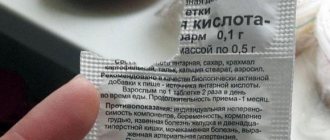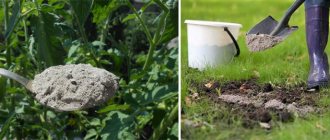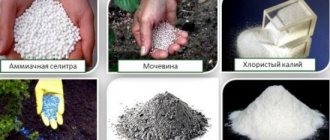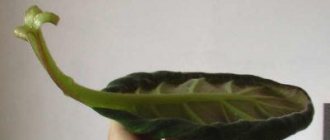When growing plants in your garden, you always want to feed them with useful substances. After all, even on fertile soils they lack one or another element.
A magical stimulator of the growth and development of garden crops is succinic acid. This is an invaluable assistant for a summer resident, which can be bought at a pharmacy for pennies.
Its range of applications is quite wide. This is a natural, environmentally friendly fertilizer, a growth and flowering activator, and an immunomodulator. Participates in the process of cellular respiration of oxygen-breathing organisms and plants.
Experienced gardeners and flower growers know what the product is and what it looks like. In appearance and methods of application, it differs little from others. At the same time, it is economical and harmless.
Before use, you should study the instructions, not forgetting the recommended dosage.
How to use for watering and fertilizing
Despite the fact that succinic acid is not harmful to flora, it must be used correctly. Only in this case will there be an effect. Methods of application are different for each specific case. They depend on the purpose, the type and variety of crop.
What does it look like and what is it for?
Succinic acid is a product of amber processing. It has the form of an odorless and colorless powder. It dissolves well in water.
It is found in minimal quantities in many plants, as well as inorganic formations: coal, amber and maleic anhydride. From the latter it is extracted for industrial purposes.
In the food industry, the substance is used as an acidulant. In agriculture, its purpose is to stimulate plant growth, accelerate development and increase productivity.
Instructions for use
For cucumbers and tomatoes
When growing cucumbers, succinic acid is used to treat seeds before planting. Prepare a solution of low concentration (2 g of substance per 20 liters of water). Soak the seeds in it for a day. Soaking will help the cucumbers sprout faster.
Tomatoes increase their yield if you use tablets or powder during the budding period. Three treatments are carried out at weekly intervals. A single dosage is 2 g of the substance per 2 buckets of water. Processing tomatoes causes rapid flowering and formation of ovaries.
How to use for processing potatoes
When planting potatoes, the tubers are processed. Planting material is sprayed with a 0.1 percent solution. After processing, they are left in the sun until sprouts appear or immediately planted in the ground. Using an acid solution accelerates flowering and subsequently leads to increased yield.
How to use when growing strawberries
When growing strawberries, succinic acid is used to stimulate root development. It protects the plant from exposure to high temperatures and diseases, increases productivity. To prepare the solution, take 0.75 g of the substance into a bucket of water.
Use for pepper spray
Peppers are treated by spraying with a 0.1% solution in 3 stages. The finished product is used before flowering and twice after flowering.
To treat any of the plants, a chemical in tablets or powder is used.
Preparing the nutrient solution
In order for amber fertilizer to bring more benefits, it is necessary to maintain the proportions. The best solution for violets is considered to be 0.02%.
How to prepare: dissolve 1 g of acid in 50 ml of warm water. Then add 2 liters. Even if you exceed the concentration, it’s okay, it won’t harm the plants.
Important! Watering with an amber solution will not replace fertilizing with other fertilizers. Typically, an acid solution is used once every two to three weeks.
Precautionary measures
The absence of harm to the environment and the human body is one of its advantages. But precautions must be taken since it is a chemical compound. If used incorrectly, it can lead to negative consequences.
Gloves are required when working with the substance. Make sure that the substance does not come into contact with exposed skin or eyes. This is very important, do not neglect safety.
If it so happens that the drug does get on the mucous membranes (in the eye or on the skin), the affected area should be immediately washed with water.
If a negative reaction occurs, you should consult a doctor. In some cases, when working with acid, irritation of the respiratory system occurs, which manifests itself in the form of an allergic reaction.
In such a situation, you should also seek medical help.
Benefits and harms
The natural substance helps animal and plant organisms ensure normal life processes. All living organisms need energy, which is generated as a result of oxidative processes in cells.
Without succinic acid, these processes are inhibited. It helps in the formation of oxygen. Therefore, it is useful not only for humans, animals, but also for plants.
What benefits does it bring to vegetable and garden crops?
Beneficial features:
- Acceleration of seedling growth;
- Improving seed germination;
- Activation of the process of vegetation and flowering of crops;
- Normalization of natural soil microflora;
- Anti-stress effect;
- Increased resistance to frost;
- Disease control;
- Prevention of accumulation of toxins.
The main effect for which acid is famous among gardeners is the acceleration of growth and development. An aqueous solution is used for this purpose. Before planting, seeds and cuttings are soaked in it, roots are treated or foliar sprays are carried out.
Special forms of biostimulants have been created for treating garden plants. Gardeners use powders or tablets that are sold in regular pharmacies.
In fact, this substance is not a top dressing or fertilizer, or a panacea for any diseases.
It has a broader purpose: it helps plants better absorb nutrients coming from the soil, preventing excessive accumulation of nitrogenous substances in the roots and leaves.
The specific effect this substance produces depends on how it is used. If acid is placed in the soil, the roots are strengthened, and when young shoots are treated, their growth and formation of new ones improves.
Treatment helps plants resist the action of aggressive external factors. Timely application can revive a dying plant. First you need to figure out how often to water or add to the soil.
How does soil change when watered?
The substance is considered a natural regulator of soil acidity. It normalizes the soil microflora and promotes the development of vital activity of the microorganisms that make up its composition.
It does not harm the environment and does not have a negative impact on the soil, which is an important advantage. The composition of the soil becomes more acidic, but does not radically change its structure.
It does not cause environmental pollution, which distinguishes it favorably from most fertilizers. It destroys existing toxic compounds in the soil, thereby making it safe, and prevents the accumulation of nitrates in the substrate.
Is there any harm to plants?
Minimum. The chemical substance is organic in nature and in case of overdose is not capable of accumulating in tissues. Decomposes when exposed to air and light. But you should not exceed the specified dosage, as there is a risk of soil acidification.
If necessary, the effect can be neutralized by liming the soil.
Advice from gardeners
To maintain crop health and produce a good harvest:
- Before planting, potato tubers need to be sprayed with a 0.02 percent solution of succinic acid and sealed in bags for a couple of hours, and then planted;
- Young flower seedlings should be sprayed with a weak solution to make the flowers frost-resistant, and the flowers will not be afraid of drought or heat;
- The drug in a 0.01 percent solution helps to activate the flowering of tomatoes, the harvest will be greater;
- Fruit plants also need to be watered with a solution, as this provides resistance to diseases and external factors, stimulates the formation of ovaries, and activates flowering;
- Vegetables watered with the drug have less nitrates;
- Spraying helps grapes not only increase flowering, but also provides immunity from temperature changes and protects against bacteria.
Therefore, experienced gardeners and gardeners use this product to keep their plants in working condition.
Indications for use in the garden
If there is a lack of acid in the soil, plants report this by giving certain signals:
- If it is weak, with sluggish and poorly growing shoots, it makes sense to process it according to the instructions.
- Poor seed germination makes it clear that the soil is not rich enough in microelements. In this case, you can use this germination and growth stimulator.
- Any weakening of the crop, susceptibility to disease and poor yield are the main indications for use.
Why do gardeners fertilize and water?
Succinic acid is chosen as an additional fertilizer. It cannot replace basic fertilizer, but makes it more effective. Thanks to this, fertilizing can be significantly reduced.
There are several main reasons and purposes why gardeners feed and water seeds or seedlings with this simple, safe but popular remedy.
- At the planting stage, the seed is pre-soaked to activate germination.
- Treatment of cuttings improves the process of root formation.
- Treatment of roots and shoots strengthens the immune system and promotes active growth.
- Protection against diseases is another reason for use.
Succinic acid does not eliminate diseases or kill parasites, but it greatly increases the natural immunity of plants. Sometimes it is used in a vegetable garden or garden purposefully, to increase productivity and improve the taste of fruits.
Release form
Currently, the acid is produced in solution in injection ampoules, in powder, and in tablets. To prepare fertilizing (watering, spraying), you can use any of the above forms.
Application and dosage
The interaction of succinic acid with any part of the plant stimulates its growth. When spraying, shoots will develop first. If you water the plant at the root, you should expect strengthening and rapid development of the root system.
Soaking seeds before sowing accelerates their germination and improves germination. For this reason, the use of succinic acid in gardening, especially in spring, is not only justified. In the following cases it is necessary:
- after transplanting seedlings to a permanent place in open ground;
- before sowing seeds to speed up germination;
- for general strengthening and increasing plant immunity;
- if there is weak growth, seedlings or seedlings are weak, they clearly require a growth stimulator.
The huge advantage of succinic acid over most fertilizers is its absolute safety for the environment. The substance is absolutely harmless and non-toxic. For this reason, acid can be used to feed any plants, including indoor plants.
Treatment of plants, regardless of type, is carried out only with an aqueous solution of succinic acid. In its factory form (powder or liquid, in an ampoule) the substance is not used for feeding.
The preparation of an aqueous solution of succinic acid is carried out in two stages. At the first, the substance is diluted to 1%. (per 1 liter of water 1 g of succinic acid). This is the so-called mother solution. If succinic acid tablets contain impurities of other substances, when diluting the mother solution, the net weight of the acid without impurities should be taken into account. Usually, it is listed in the composition.
At the second stage, the mother liquor is diluted to the working solution. The most commonly used solution of succinic acid is 0.001%, 0.004%, 0.01%, 0.02%.
Instructions for use
| Type of feeding | Dosage | Procedure |
| Soaking the seeds | Dilute 40 ml of mother solution in 1 liter of water | Place the seeds inside the fabric folded in half, if possible, distribute them evenly over the entire area. Pour in the prepared solution. Leave for a day. |
| Spraying | When the first leaves appear - 100 ml of mother solution per 10 liters of water. During budding and immediately after flowering - 200 ml of mother solution per 10 liters of water. | Spray the green mass of any garden crop. |
| Soaking cuttings | 100-200 ml of stock solution per 10 liters of water | Dip the roots into the prepared solution for 2-3 hours, then plant them in a permanent place. |
| For tuber crops | 400 ml of stock solution per 10 liters of water | Spray the tubers, cover with film, wait until dry. The plant is ready for planting. |
Shelf life
In original packaging, succinic acid can be stored for up to 2 years. Leave in the solution prepared for feeding for no more than three days in a dark, dry, cool place. The working solution should be used 3-5 days before it begins to lose its properties.
Protective equipment (mask, gloves, etc.) is not needed when treating plants with succinic acid. The substance is not toxic. In addition, succinic acid does not tend to accumulate in the soil. It is completely safe for plants, as well as for people.
Use of tablets and powder
Everyone knows that all living organisms on earth consist of organic and inorganic substances. The substance in question belongs to carboxylic acids and is of organic origin.
It is a natural component of all living organisms on the Planet, including plants. Fertilizing and spraying enrich garden crops with microelements that make up the substance.
I recommend watching the video (be sure to watch it to the end), you will learn a lot of new things:
The product protects the plant from overheating and cold, excessive waterlogging and drought. Strengthens resistance to diseases, accelerates the process of growth and development.
How to breed for watering and fertilizing
Before diluting, you need to determine the dosage:
- To obtain a 0.1 percent solution, 1 g of the drug in powder form is diluted in 1 liter of water.
- If you use tablets for watering, you need to take 10 pieces of 0.1 g per 1 liter of water.
- If a higher concentration is required, the number of tablets can be increased.
The process of creating the desired concentration consists of several stages. Pour the substance into a container with a small amount of water. Heat the solution until all the grains dissolve. Then add water to the desired concentration.
The solution is used for 3 days. The temperature at which the solution should be stored should not fall below 25 degrees. Using the product after three days will be ineffective.
How to apply and how often to water
Depending on the plant variety, as well as the goals set for this procedure, there are several main types of processing. It could be:
- Soaking planting material and root system in the prepared solution;
- Spraying plant shoots;
- Wiping stems and leaves with a solution;
- Watering with solution.
Any of the methods requires compliance with the dosage and the implementation of basic precautions.
Pre-sowing treatment involves soaking seeds to improve their germination. Soaking solution: take 1 g of substance per 10 liters of warm water.
Dry seeds are soaked in the prepared solution. They are kept for 12 to 24 hours. Then you can lay it out on a dry cloth. After drying, the seeds are sown in a previously prepared substrate.
Pre-sowing treatment is especially useful for old seeds, for plants that reproduce by tubers and bulbs (potatoes, Jerusalem artichoke, dahlias, gladioli). Before planting, they are not soaked, but sprayed with a solution.
After about 2 hours, they are kept under film and planted in the ground.
To root cuttings, a solution of higher concentration is used compared to seed treatment. The prepared cuttings are immersed in it so that the cut goes 2 cm deep and left for 24 hours.
It is important to follow the rooting technology - there must be 2-3 leaves on the cutting.
Before immersion, wrap fragile cuttings (the cut area) with cotton wool. The solution activates the appearance of roots on the cuttings.
The survival rate of seedlings of any garden crop will improve if it is watered with an acid solution before planting. It is necessary to dilute for feeding and watering so that the concentration is 0.25%. Water the seedlings no earlier than half an hour before planting.
The second effective way for seedlings is to spray them with a solution 1 or 2 times a day until planting.
Strengthening the root system. To do this, water the already planted plants with a 0.2 percent solution so that the root soil is saturated to 15-30 cm. The procedure is repeated a week later. The second option for root stimulation is soaking for 1-1.5 hours in a solution of the same concentration. After treatment, the roots are dried and after 30-40 minutes. planted in the soil.
How to fertilize for growth and flowering? Spraying with a solution of 0.1 percent concentration is useful. The procedure used depends on the purpose.
- If it is necessary to achieve more active vegetation during the growth period, you need to spray the stems and leaves every 2-3 weeks.
- To stimulate flowering, spraying is carried out in 2 or 3 stages. The first is before flowering, during this period it is sprayed twice a day.
Strengthening the immune system and protecting against stress. Any stress, be it hypothermia, excessive moisture, or even replanting, harms plants and negatively affects their growth.
The main indicator of stress can be considered a deterioration in the appearance of leaves, their falling or lack of flowering. A special anti-stress treatment helps to cope with this. To do this, the roots and leaves are sprayed with a solution in a 0.2 percent concentration. The spray should be fairly fine - in the form of small droplets. Treat every 2-3 weeks.
Disease prevention also involves treatment with succinic acid. If the plants are weakened or have recently been sick, it is worth preparing a strong solution with a concentration of 2.5%. You can literally bathe the leaves and stems in it for 10 minutes or spray it generously. After the first procedure, you can wait a few weeks and repeat again.
Where to buy acid
You can buy a natural activator at any specialized store for gardeners and flower growers. You immediately need to decide on the form of use.
For greater effect, it is recommended to purchase the substance in its pure form, which looks like a powder, and independently prepare solutions from it for soaking, spraying or watering.
Pharmacy medications are sold in tablets and are also effective when used correctly.
Depending on the format of the drug, its concentration and volume, the price may vary. In tablets, the cost starts from 20-25 rubles per package. A package of powder can cost from 100 rubles or more.
For gardeners and gardeners, the product is a universal assistant, a growth and flowering enhancer, and in some cases even a resuscitator.
succinic acid
This substance is a medicine against inflammatory processes. The dosage form of the drug is different: it is sold in tablets and ampoules, there is a powder form.
What it is
Succinic acid is used in medicine to restore the body's strength. Doctors recommend a remedy for improving brain function, restoring reflexes, for better concentration, increasing attentiveness, and restoring the nervous system that has suffered stress. It supports blood circulation, prevents neoplasms, thereby protecting the body from pathology.
How it affects plants: pros and cons
The medicine helps to improve the immunity of plants. Since it is a powerful anti-inflammatory agent, it inhibits the development of pathogenic bacteria, which means it maintains healthy development. This drug is an excellent growth stimulator, so it is necessary for weak shoots that need increased nutrition.
Succinic acid:
- Increases the resistance of seedlings to harmful factors;
- Strengthens the root;
- Helps produce chlorophyll, which is essential for healthy crops;
- Improves appearance;
- Protects against toxic elements that may be present in the soil;
- Helps fight diseases;
- Prevents the development of pathogenic bacteria;
- Restores soil microflora.
To improve health, plants are sprayed with a solution of succinic acid. This drug is also used for irrigation.
The drug will have a negative effect on the plant,
if the dosage of the strengthening solution is incorrect. In this case, leaf burns and disruption of the soil microflora are likely, which will lose its nutritional suitability.
Succinic acid is needed:
- During the growing season;
- With weak growth and development;
- If the plant is planted in soil of questionable quality, which means it may contain toxins;
- After illness;
- Before flowering and fruiting;
- Before transplanting to another soil.
How to fertilize the soil in a greenhouse in the spring before planting
For indoor plants
Growing plants at home always causes stress for flowering crops. Sometimes they lack soil due to the small volume of the pots. Lack of oxygen and sunlight is always a serious test for flower crops.
Being an effective growth stimulator and natural adaptogen, the acid has a positive effect on indoor plants. She:
- Reduces the negative impact of stress factors (temperature, moisture-related and lighting);
- Increases the immunity of flowers to bacterial and fungal infections;
- Promotes the formation of beneficial soil microflora and rapid absorption of nutrients from the substrate;
- Well restores chlorophyll in leaves;
- Strengthens the root system after transplantation, activates the formation of new roots;
- Promotes rapid restoration of crops damaged by insect pests.
How to use fertilizer in tablets
If the substance is purchased in tablet form, then its dosage is 0.1 g. To get a liter of a strong 0.2% solution, you need to take 20 tablets. To speed up their dissolution, they are ground into powder. To obtain a 0.02% solution, take 2 tablets per 1 liter of water.
Aqueous solutions are prepared before use, as they quickly lose their beneficial properties. Store solutions for no more than 3 days.
How and when to spray plants
The fastest way to deliver nutrients is to process flower crops leaf by leaf. Solutions are absorbed more efficiently on the underside of the leaf, where the stomata are located.
Spraying is beneficial in the following cases:
- in the spring, when flowers emerge from hibernation;
- after pruning the stems to activate the development of lateral buds;
- after treatment with chemicals;
- after illness, damage by insects;
- after prolonged exposure to unfavorable conditions.
During flowering, crops are not sprayed. Evening or morning hours are convenient for work.
Benefits for roots
The effectiveness of succinic acid in stimulating root formation is moderate. Therefore, if you need to quickly root a flower cutting, it is better to choose stronger agents (Heteroauxin, Kornevin). But as a support and restoration of roots - that’s it.
For which flowering crops is succinic acid useful?
Experienced gardeners use acid to grow orchids as an indispensable auxiliary tool.
In addition to these flowers, the following flower crops respond well to treatment:
- dracaenas;
- ficus;
- begonias;
- palm trees (especially dates);
- roses;
- all types of succulents.
Reviews
Reviews from gardeners who have used succinic acid to stimulate growth or strengthen plants are often positive. The most important thing is that resistance to diseases increases by strengthening your own immunity.
Gardeners note that the biostimulant is not able to completely protect their “wards” from diseases or parasites, but when used correctly, it effectively helps increase resistance. And strong immunity is the main thing.
To achieve the desired result, you must adhere to the recommendations of specialists and strictly follow the recommended dosage.
This economical product is indispensable for connoisseurs of environmentally friendly harvests.
Its use does not pollute the environment and is not dangerous to humans. I wish you high harvests, dear readers!











